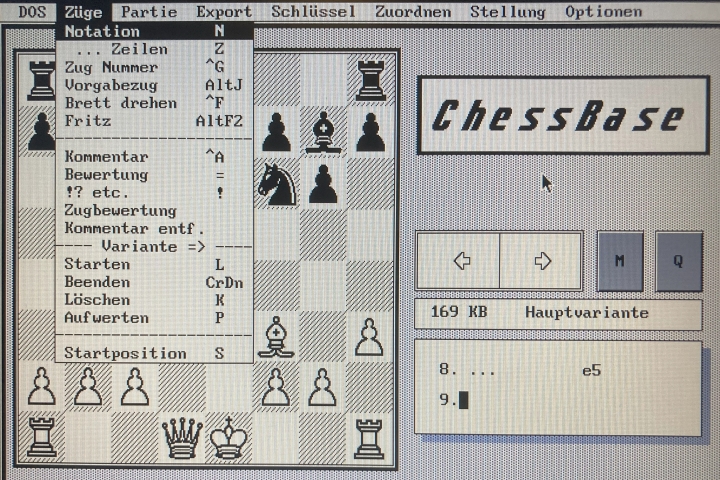A note for younger readers: in this article I also use some older technical terms from the early days of personal computers, such as DOS, floppy disk, or parallel port. If you’d like to know more about these, just consult Wikipedia.
The Beginning
The first versions of ChessBase were available exclusively for Atari ST computers, which at the time — unlike “IBM-compatible” PCs — already offered a graphical user interface with windows and mouse control. You may have seen the well-known photo of then-World Champion Garry Kasparov at his Atari ST running ChessBase (see anniversary article).
The DOS Era
FRITZ 20 is more than just a chess engine – it is a training revolution for ambitious players and professionals. Whether you are taking your first steps into the world of serious chess training, or already playing at tournament level, FRITZ 20 will help you train more efficiently, intelligently and individually than ever before.
At the time I was using a PC with the DOS operating system, so I only joined in with version 2.3 — the first release made available for IBM-compatible PCs. The starter package cost 498 Deutsche Marks, a hefty sum for me as someone just beginning my career, but it was a purchase I never regretted.
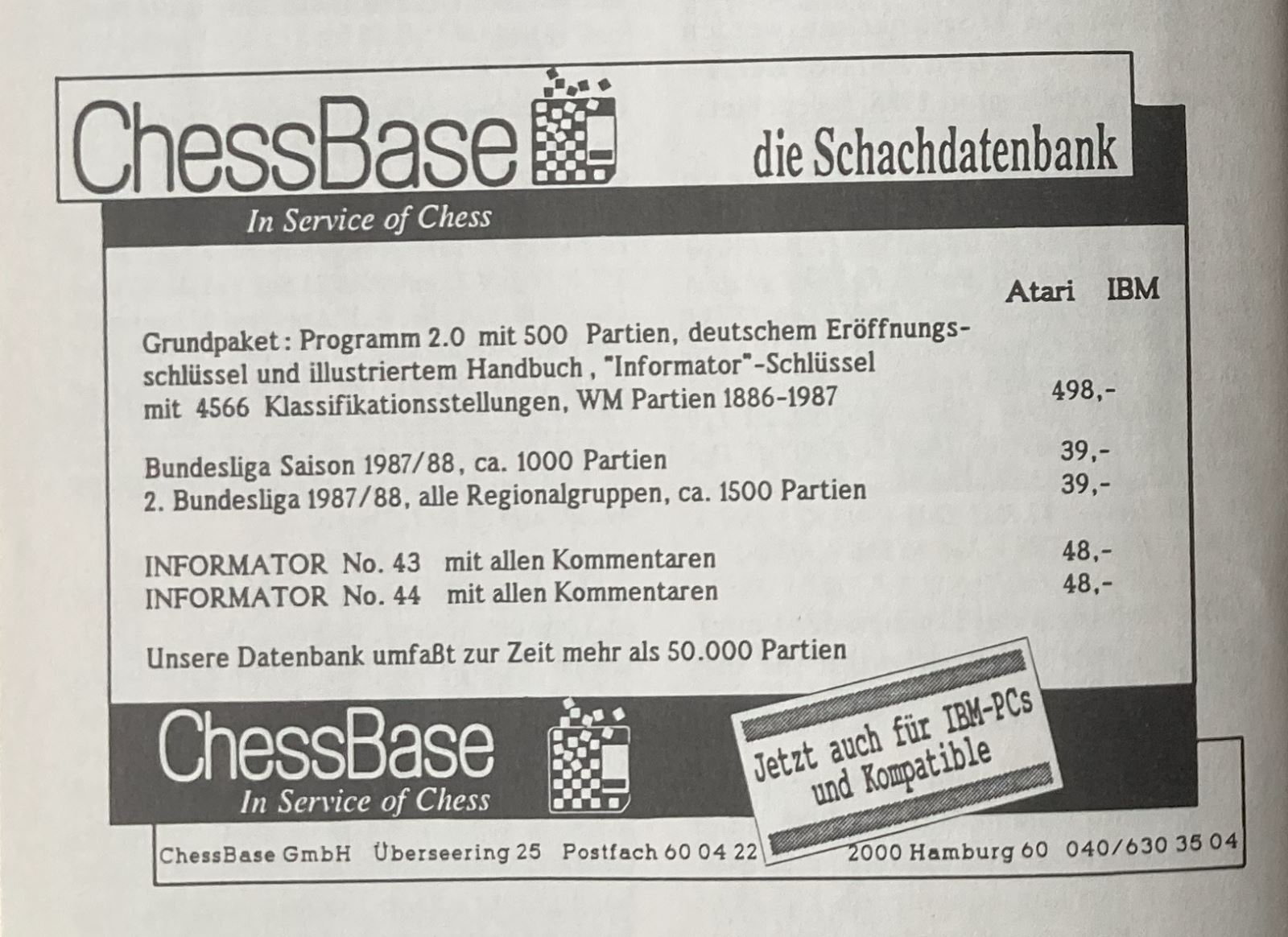
To this day, I still wonder how ChessBase managed to develop a complete program with a graphical interface for the rudimentary DOS operating system — and fit it all onto a single floppy disk with a capacity of just 720 kilobytes.
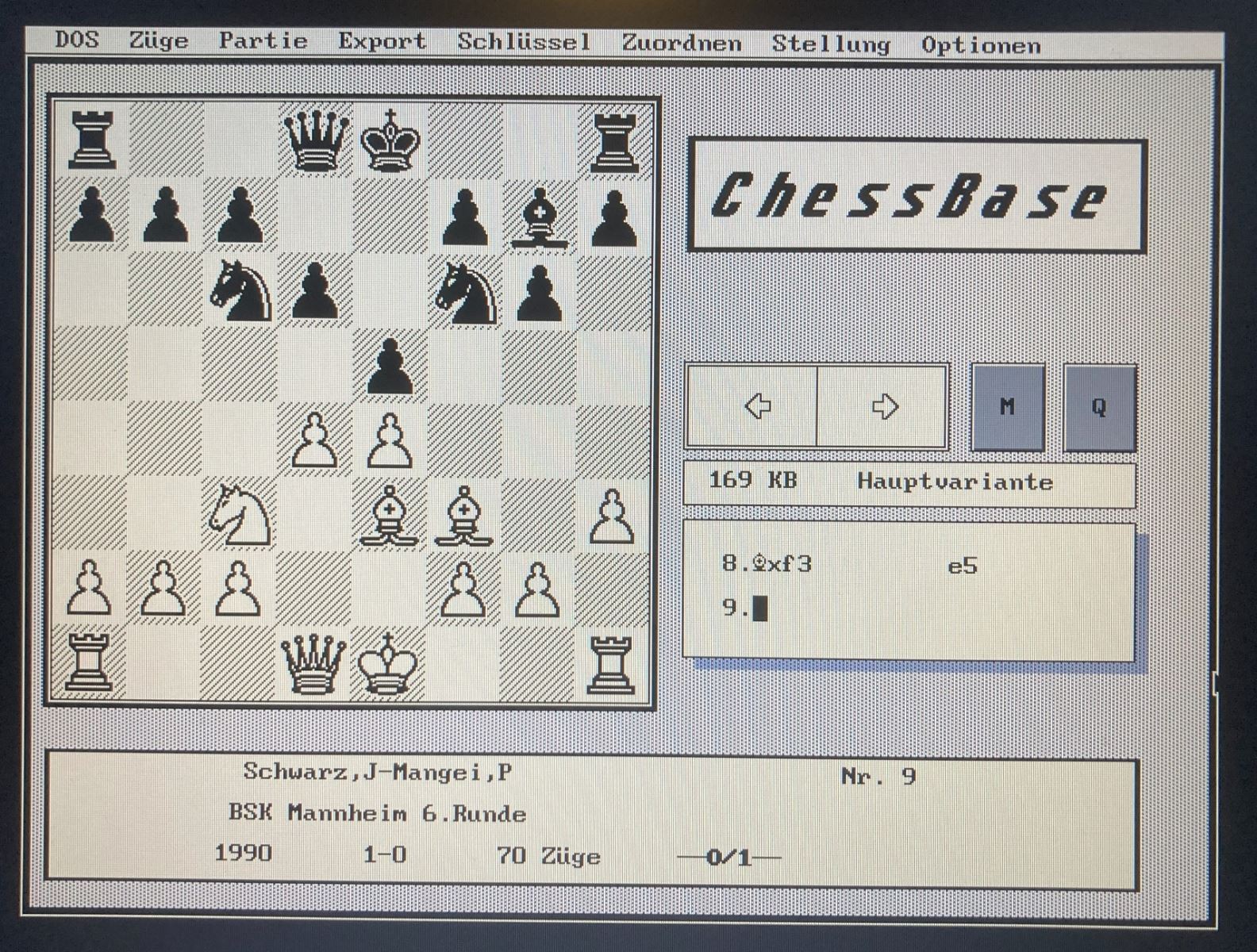
Unfortunately, I can’t show you any screenshots of versions 2.3 and 3.0, because at the time you had to send the original floppy disks along with the order form back to Hamburg in order to get a discounted update to the new version.
Even so, ChessBase ran surprisingly well under DOS. It was usable even on a PC XT without a hard drive (8 MHz CPU, 640 KB of RAM, two 360 KB floppy drives, green monochrome monitor). As the manual for version 2.3 already noted: “… especially when working with larger amounts of data, having a hard drive is very convenient.”
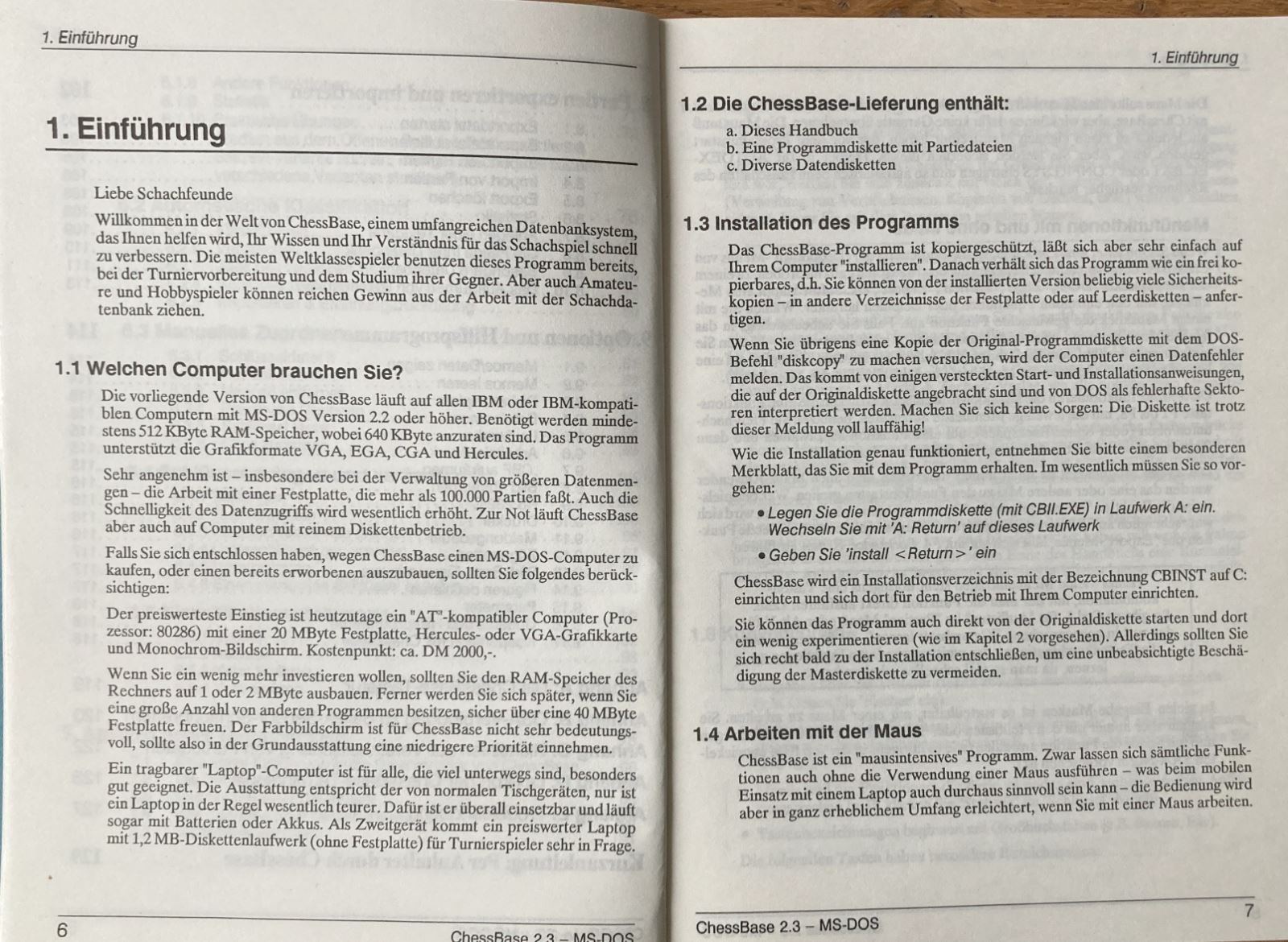
ChessBase was delivered on a copy-protected floppy disk. You could transfer a limited number of installations to a computer (including those with a hard drive) — or simply run the program directly from the original disk.
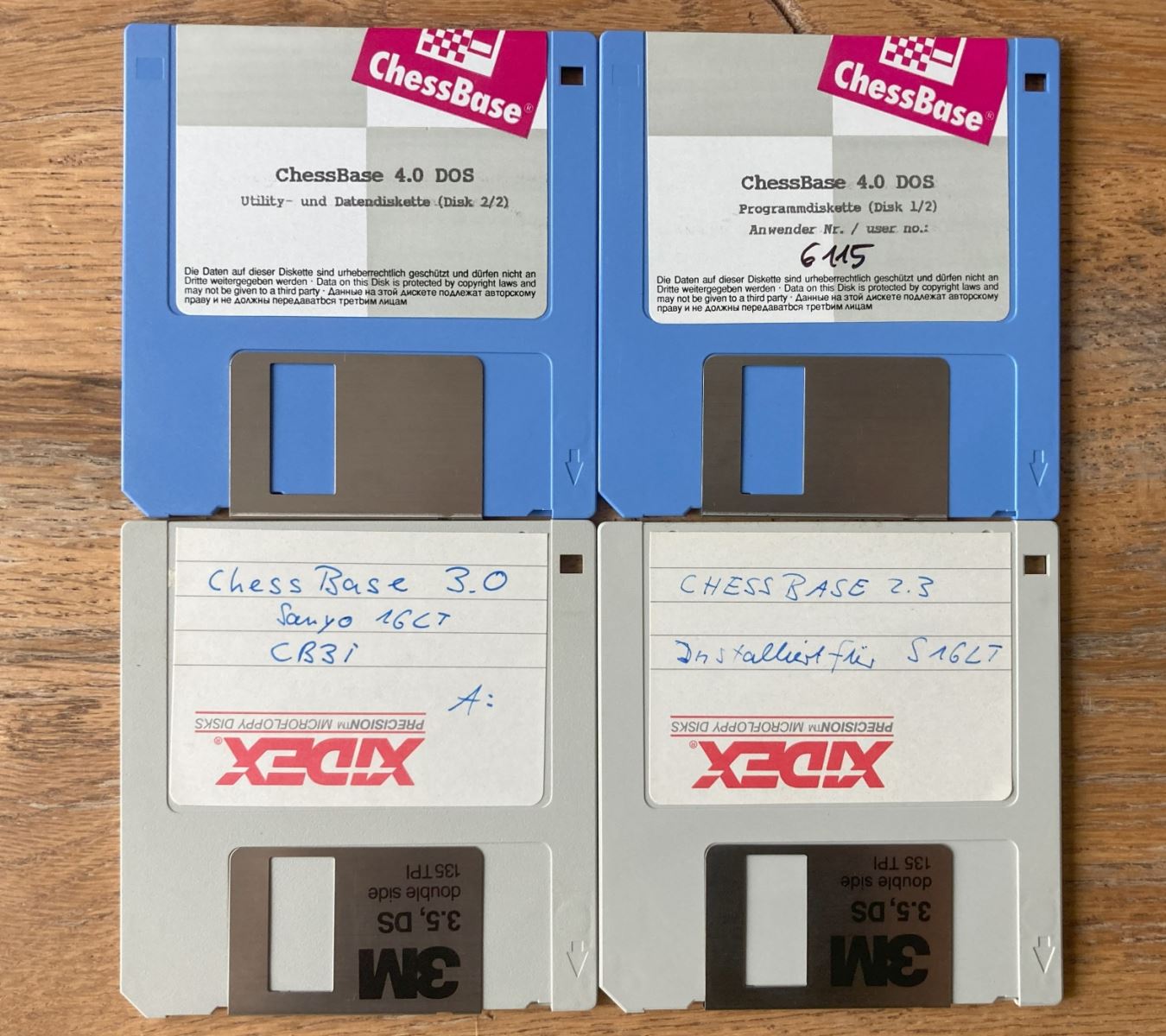
Back then there were no CD-ROMs or DVDs yet (or they and their drives were hardly affordable), and internet access was still rare in private households. And even if you had it, you paid “by the minute,” which could become very expensive very quickly. As a result, the data disks offered by ChessBase, along with the ChessBase Magazine (CBM) that was already available at the time, were practically the only sources for large collections of games—unless you wanted to enter games manually from books or magazines.
The CBM was virtually indispensable. Every two months you would receive a substantial magazine by post, sometimes more than 100 pages long, filled with articles and analyses—often contributed by grandmasters. One highlight was Robert Hübner’s legendary column titled “Abfall” (Waste)”.
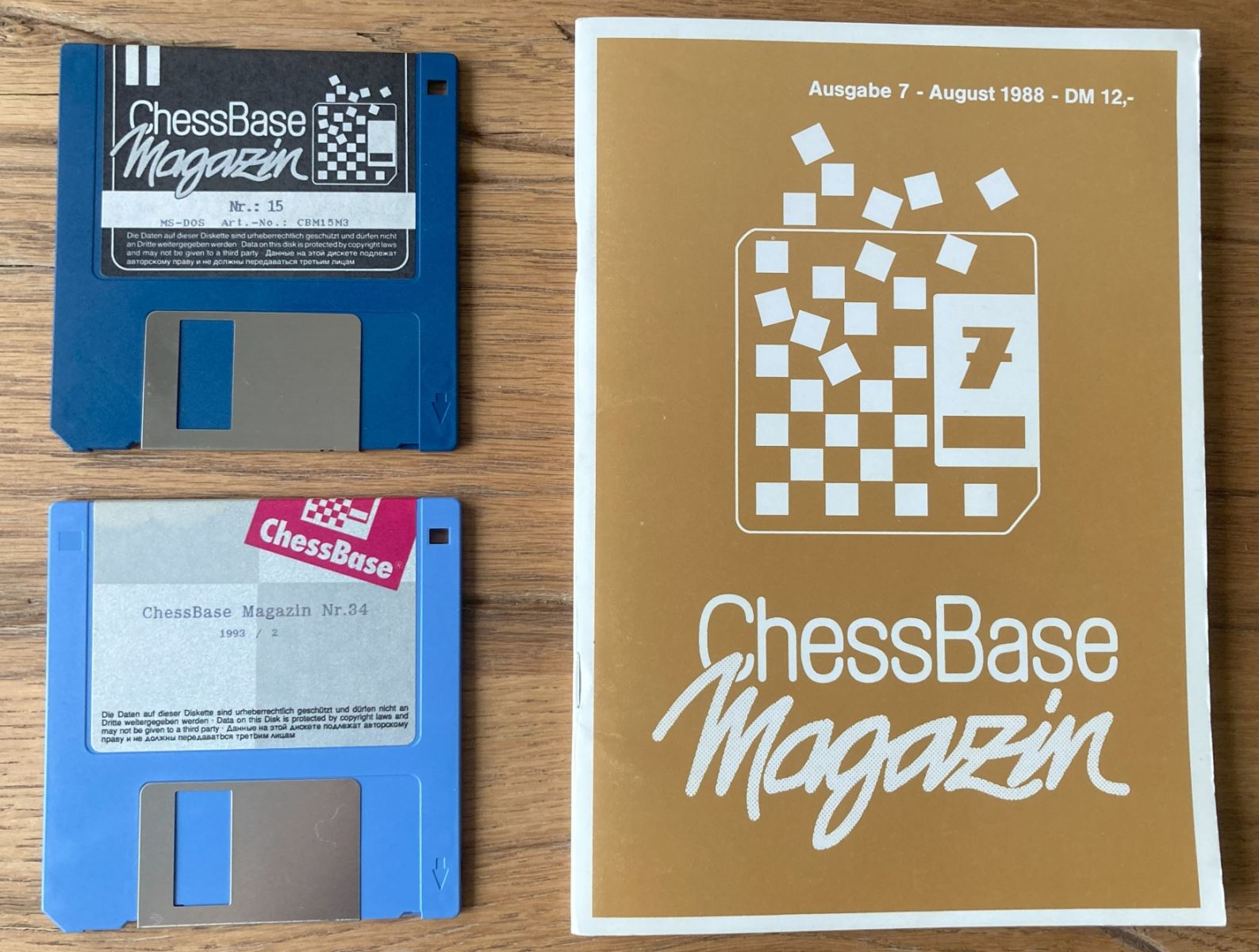
Windows conquers the PC world
 Between 2004 and 2007 the 13th World Champion Garry Kasparov recorded a large 3-volume Najdorf video course. ChessBase is publishing this great classic in a complete edition in the current ChessBase Media format. Look forward to this classic of chess!
Between 2004 and 2007 the 13th World Champion Garry Kasparov recorded a large 3-volume Najdorf video course. ChessBase is publishing this great classic in a complete edition in the current ChessBase Media format. Look forward to this classic of chess!From the early 1990s, software developers faced a difficult transition: Microsoft Windows was rapidly establishing itself as the dominant PC operating system. By the release of Windows 95 (and Windows NT 4.0), it had become virtually impossible to sell DOS-based programs. Some companies failed to adapt—what had once been excellent DOS applications turned into dreadful Windows programs. Classics such as dBase, Lotus 1-2-3, and WordPerfect, along with many of their developers, eventually disappeared.
ChessBase also struggled with this shift. The first Windows versions, ChessBase for Windows (CB5) and ChessBase 6.0, failed to impress. The floppy disk copy protection was replaced with a “software protection module” (a dongle) that had to be connected to the PC’s parallel printer port—a solution that proved highly unpopular. With versions 7.0 and 8.0, however, ChessBase found the right path: the software, along with large databases, was distributed on CD-ROM, and the cumbersome copy protection was finally abandoned.
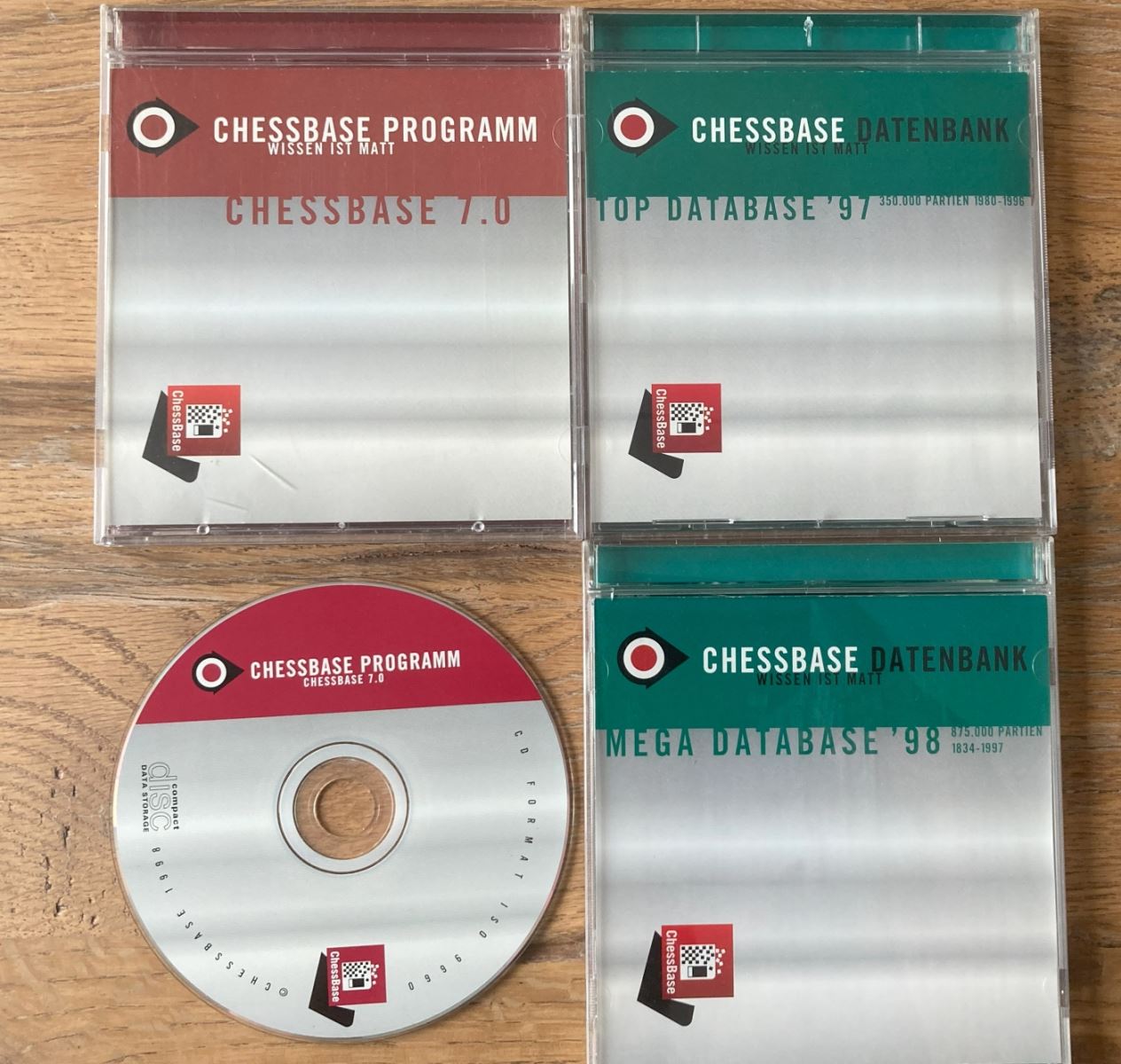
The user interface, shaped by the excitement over Windows’ new window-based design, still looked a bit playful at first. But with the more powerful PCs now available, the program had finally become practical to use.
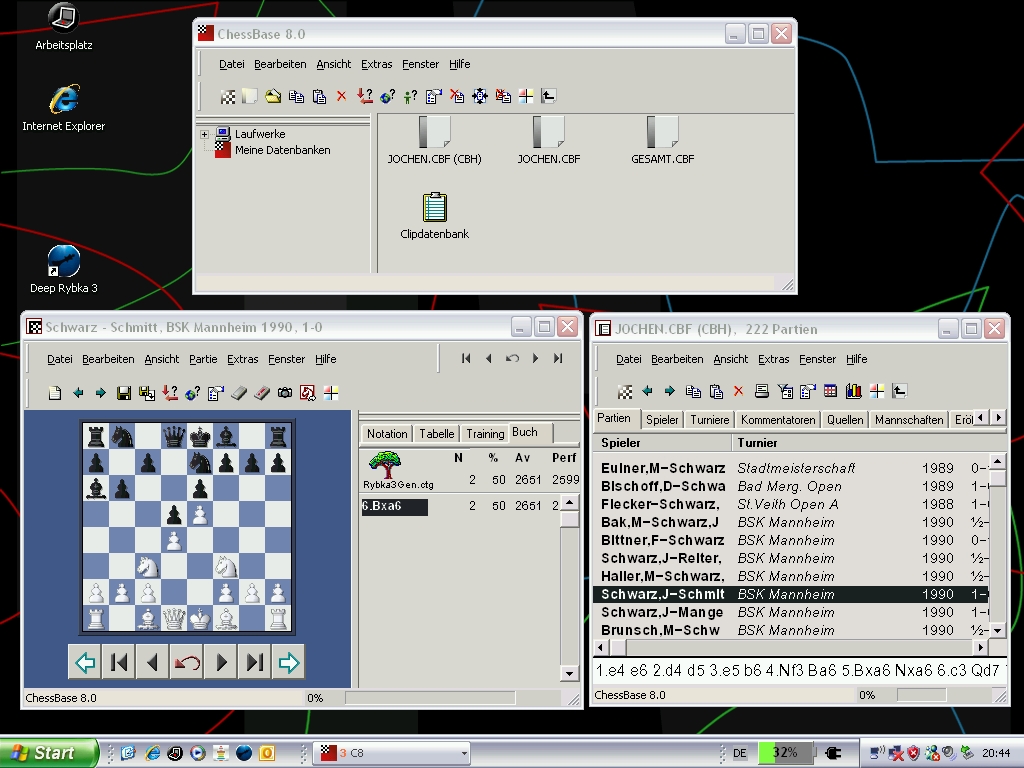
In the meantime, the database format had also changed. The old CBF format from the DOS era was replaced by the CBH format, which has remained virtually unchanged to this day (a new “2 CBH” format was introduced in 2022 with ChessBase 17).
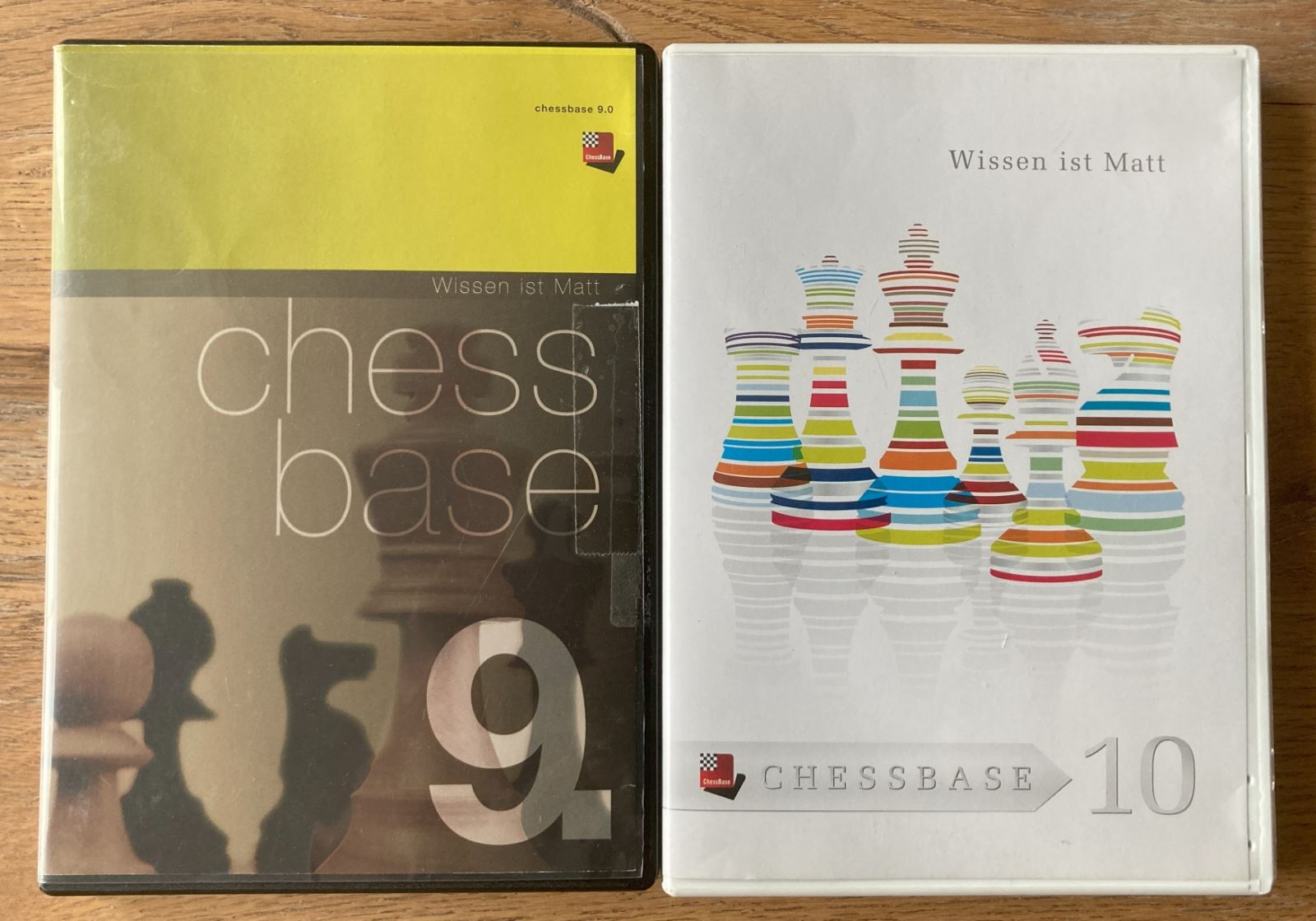
The package really came into its own with versions 9 (2004) and 10 (2007), which were released on DVD and featured a significantly improved interface.
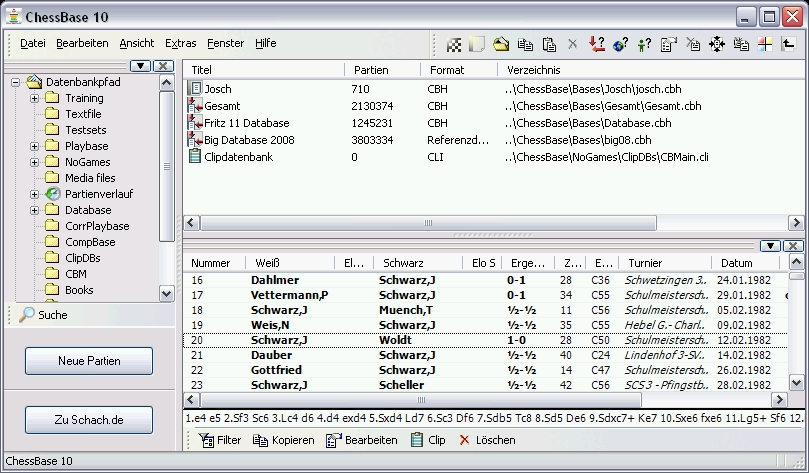
Modern era
With ChessBase 11 (2010), we leave behind the historical versions. This release introduced the “ribbon” interface, which has remained virtually unchanged to this day, as well as online activation of the software via the “ChessBaseAdminTool.”
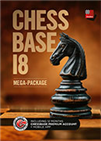 Winning starts with what you know
Winning starts with what you knowThe new version 18 offers completely new possibilities for chess training and analysis: playing style analysis, search for strategic themes, access to 6 billion Lichess games, player preparation by matching Lichess games, download Chess.com games with built-in API, built-in cloud engine and much more.
From this version onward, ChessBase can still be installed, activated, and used on current Windows systems. And if you still have older versions lying unused in a drawer, the younger players at your chess club will surely be happy to make use of them!
ChessBase 12 introduced additional 64-bit versions, which significantly improved performance, and ChessBase 13 brought integration with the ChessBase Cloud—a milestone in the program’s development in my view.
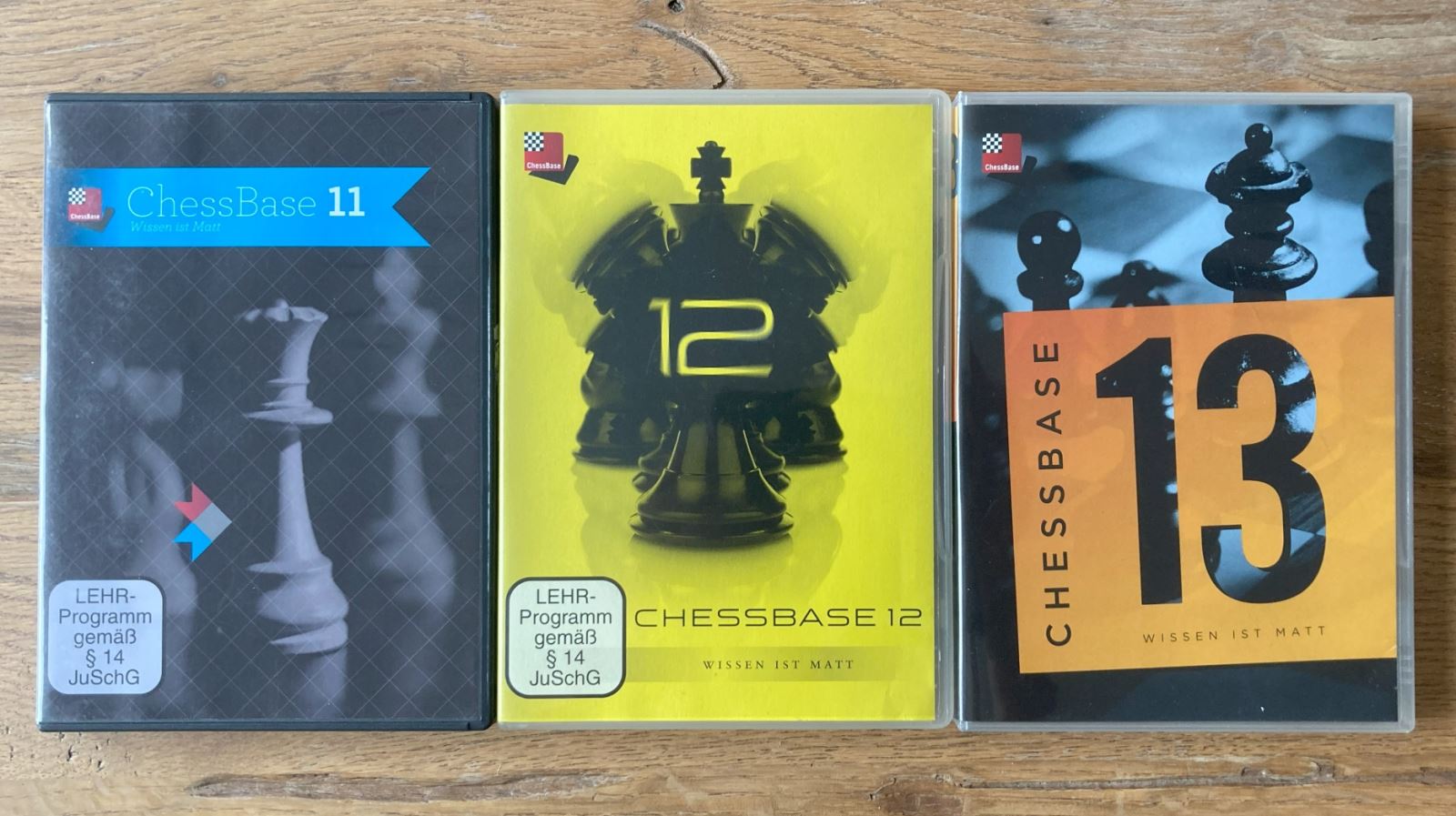
YOUR EASY ACCESS TO OPENING THEORY: Whether you want to build up a reliable and powerful opening repertoire or find new opening ideas for your existing repertoire, the Opening Encyclopaedia covers the entire opening theory on one product.
